When people think about vehicle durability, their minds often gravitate toward crash test ratings, towing capacities, or warranty packages. Rarely do they stop to consider how a car behaves once the pavement ends.
And yet, for millions of drivers across rural areas, national parks, undeveloped properties, and backroads, dirt roads aren’t an occasional detour — they’re a daily reality. That’s where the real separation begins between vehicles that are engineered with integrity and those that simply fall apart.
Dirt roads are unforgiving. They’re not extreme off-road environments — you’re not rock crawling or scaling a mountain pass — but they deliver a consistent, punishing test that exposes structural weaknesses, lazy engineering, and low-quality materials. Every pothole, rut, and washboard ripple challenges the chassis.
Constant vibrations probe the tightness of trim panels, test the endurance of suspension bushings, and expose shortcuts in insulation and interior fastening. Unlike smooth highways, dirt roads don’t let anything slide. A vehicle might look strong, feel solid in the showroom, or boast off-road-themed branding, but only real-world use over unpaved terrain tells the truth.
This article exists to spotlight that truth. We’re looking at two very different categories of vehicles: the ones that rise to the challenge of rugged terrain and remain composed over time, and the ones that quickly deteriorate, not from abuse, but from the kind of regular, moderate rough-road exposure that countless drivers experience daily.
This isn’t about extreme off-roading. This is about the subtle but relentless wear and tear of rural life, weekend exploration, and everyday unpaved routes. In the first half, we’ll look at five vehicles that maintain their composure, silence, and structural integrity over thousands of miles of dirt-road use.
These are the unsung heroes that don’t just perform well on bad roads but do so quietly, without rattling interiors, noisy suspension components, or dashboard tremors.
They feel solid, not just when new, but years down the line. Some of them are obvious choices, built with body-on-frame strength and off-road pedigree. Others are more surprising — refined crossovers or wagons that manage to combine comfort with grit.
In the second half, we’ll explore five vehicles that unravel far too quickly. These models may market themselves with adventurous aesthetics or boast about all-wheel-drive capabilities, but they simply can’t handle sustained time on unpaved roads.
From flimsy interior materials to underbuilt suspensions, these cars begin to squeak, rattle, and degrade far earlier than their owners expect. They may be fine for city driving, but they fall apart the moment the conditions get even a little bit rough.
Whether you live at the end of a gravel road or just love the idea of exploring places pavement hasn’t reached, understanding which vehicles are built to last — and which only pretend to be — is essential.
This isn’t about brand loyalty or marketing slogans. It’s about which cars hold their silence on the road less traveled and which ones shake, buzz, and come apart when the going gets tough.
Also Read: 5 Cars Where Minor Repairs Total Over $1,000 And 5 That Stay Manageable
5 Cars That Don’t Rattle on Dirt Roads
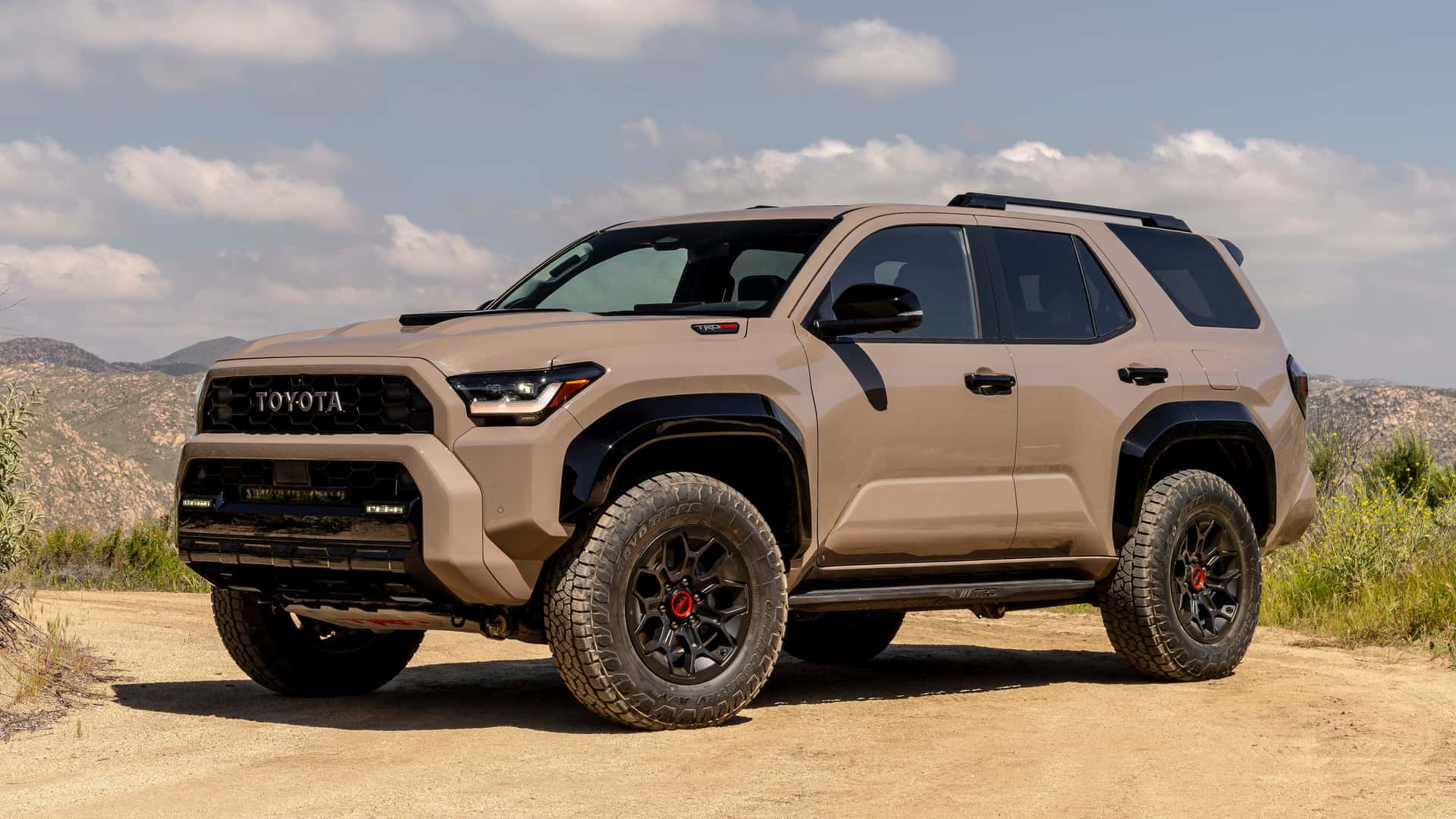
1. Toyota 4Runner
The Toyota 4Runner has earned its reputation as a go-anywhere, do-anything SUV by sticking to old-school fundamentals that work. Unlike many modern crossovers that prioritize urban comfort, the 4Runner is built on a traditional body-on-frame architecture — a design shared with trucks and purpose-built off-roaders.
This structural advantage means that the 4Runner handles chassis flex and road punishment far better than unibody rivals. Its solid rear axle and durable independent front suspension are specifically tuned to manage uneven terrain without compromising vehicle integrity.
Whether crawling over rocks, cruising on loose gravel, or barreling through muddy trails, the 4Runner delivers a sense of confidence and cohesion that makes it feel like it’s hewn from a single block of steel. Another reason the 4Runner remains rattle-free on dirt roads is its minimalistic and function-first interior design
Toyota didn’t try to cram the 4Runner full of delicate trim pieces, paper-thin plastics, or flashy accents prone to vibrating loose. Instead, everything from the dashboard to the center console is bolted down with the same rugged ethos that guides the rest of the vehicle.
The materials may not scream luxury, but they do speak volumes about longevity. What you get is a cabin that remains tight and composed even after years of washboard road abuse. The seats stay firm, the doors never feel flimsy, and there’s no mysterious buzzing that slowly drives you insane on long drives through the backcountry.
Long-term ownership reports frequently praise the 4Runner not only for its mechanical reliability but also for its cabin integrity. This is a vehicle that doesn’t degrade easily over time — a rare feat in an era of increasingly fragile builds.
Owners in rural regions or those who frequently travel on unmaintained roads often describe the 4Runner as a “tank,” not because it’s flashy or high-tech, but because it takes punishment day after day without loosening its bolts or making a sound. That silence speaks louder than any spec sheet ever could.
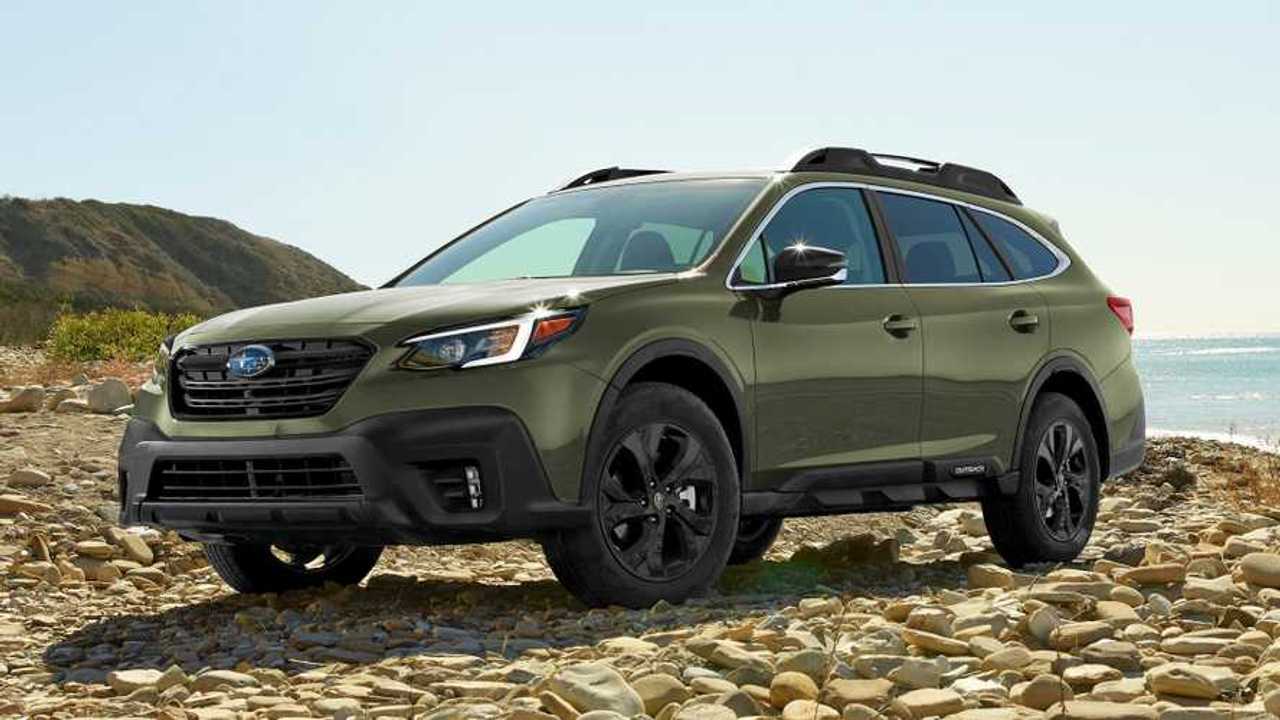
2. Subaru Outback
The Subaru Outback is a testament to the idea that you don’t need a truck to survive on rough roads. What sets the Outback apart is its inherently balanced platform, which blends the advantages of a low center of gravity with all-wheel-drive traction and a suspension tuned for real-world abuse.
Subaru’s symmetrical all-wheel-drive system doesn’t just provide grip — it distributes torque in a way that keeps the vehicle planted on uneven surfaces. The chassis is unibody, yes, but it’s reinforced and well-engineered to resist flexing under pressure, meaning the car doesn’t twist or groan when one side dips into a rut and the other stays elevated.
One of the most noticeable things when you drive an Outback down a dirt road is how composed everything feels. There’s no excessive body shake, no dashboard tremble, and no squeaking from the rear hatch — even after years of use. Subaru puts effort into fit and finish, using interior components that don’t just look nice but also stay in place.
The seat frames are sturdy, the window seals don’t rattle, and the underbody is reinforced in all the right places to prevent feedback from the terrain from making its way into the cabin. The result is a quiet, predictable ride that feels like it’s designed with rural living in mind.
Where the Outback shines is in its real-world usability. This is a vehicle made for the realities of dirt driveways, remote hiking trailheads, and snow-packed logging roads. It’s not flashy or fast, but it’s incredibly composed — a quality that only becomes more valuable the longer you own it.
That composure is a product of engineering choices aimed at creating a vehicle that can go almost anywhere, but do so without sounding like it’s being dismantled one bolt at a time. For families, outdoor enthusiasts, or rural commuters, that level of durability in a crossover package is hard to beat.
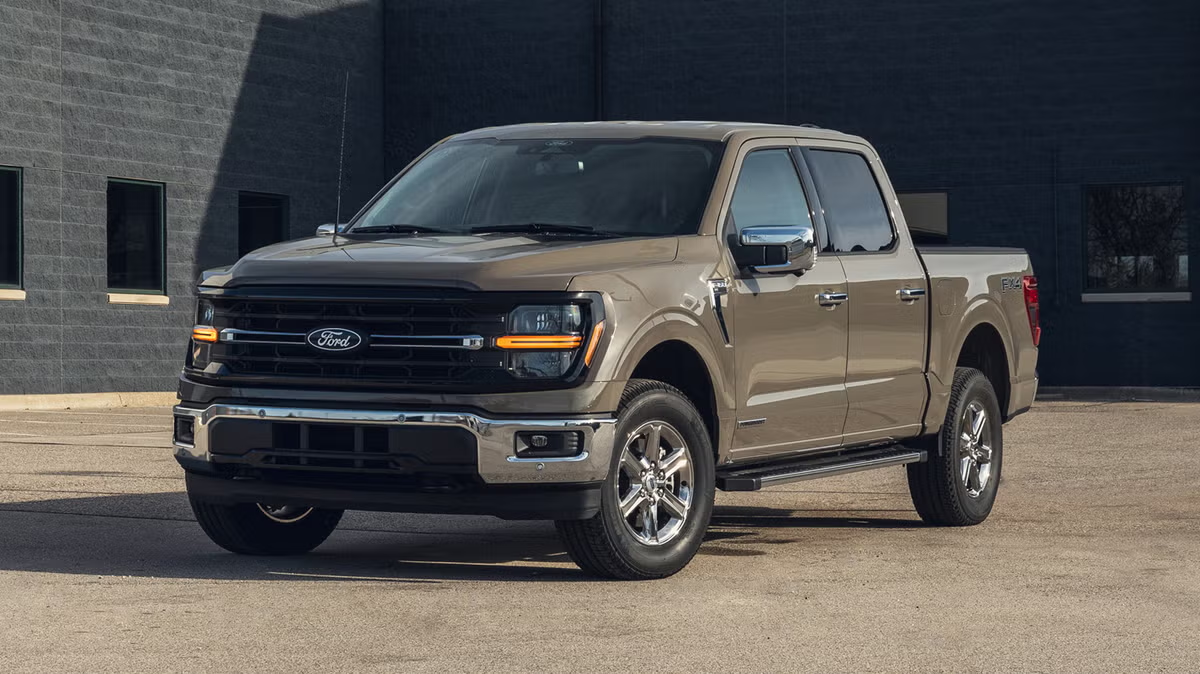
3. Ford F-150 (2015–Present)
The modern Ford F-150 stands as a shining example of how full-size trucks can be both rugged and refined. With the 2015 redesign, Ford made a bold move by switching to a military-grade aluminum body. This change, while initially controversial, resulted in a lighter yet stronger frame that dramatically improved rigidity.
That rigidity plays a huge role in keeping the F-150 quiet and composed over uneven terrain. Combine that with a fully boxed high-strength steel frame, and you get a truck that doesn’t creak, groan, or twist under pressure — even when it’s hauling gear across rocky job sites or long stretches of unpaved backcountry roads.
One of the major upgrades in recent F-150 models is the improved suspension tuning. Ford gave serious attention to how the truck absorbs imperfections in the road, with coil-over front suspension and well-calibrated leaf springs in the rear that balance load-bearing capacity with ride comfort.
Even without opting for off-road packages like FX4 or Tremor, the base suspension setup manages dirt roads with impressive grace. There’s minimal vibration transfer into the cabin, and the damping prevents the truck from feeling jittery or unstable on washboard terrain. Interior panels stay tight, and nothing inside feels like it’s fighting to come loose.
Inside the F-150, Ford has created one of the quietest cabins in the truck segment. Extensive noise insulation, smart engineering choices, and high-quality materials result in a cabin that remains calm even when the outside world gets chaotic. You won’t hear the rear seats buzz over gravel, and the dashboard stays firm even on the roughest roads.
Long-term ownership reviews consistently highlight how well the F-150 holds together with age, particularly when used in rural or off-pavement environments. It’s not just a truck that looks tough — it stays tough, mile after mile.
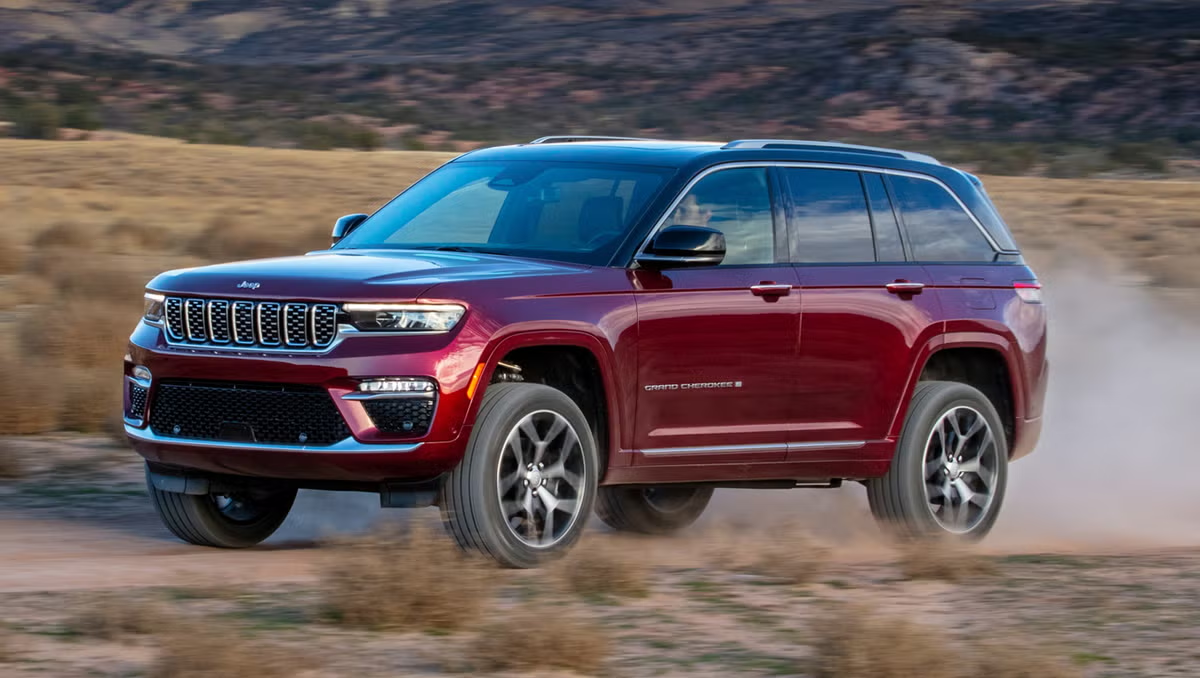
4. Jeep Grand Cherokee (WK2 Platform, 2011–2021)
The Jeep Grand Cherokee, built on the WK2 platform, is one of those rare SUVs that combines true off-road ability with premium comfort. Unlike other Jeeps that sometimes suffer from quality control issues, the WK2-era Grand Cherokee, thanks in part to its Mercedes-Benz-influenced underpinnings, has a rock-solid chassis that resists flexing and keeps the structure stable over uneven terrain.
This is particularly noticeable when driving on dirt roads or forest service tracks. The suspension, whether it’s the standard setup or the optional Quadra-Lift air system, soaks up ruts and dips while keeping the cabin stable and relatively silent.
Where this vehicle excels is in its interior integrity. The cabin is well-padded and well-secured, meaning that all those little components — from center console inserts to door handles — don’t buzz or shake when the road gets bumpy. The seats are supportive and don’t wobble or click under body motion.
Even the soundproofing materials used in the cabin help muffle the gravel under the tires, giving the vehicle a premium feel in an environment where most SUVs start to fall apart. It’s not just that the Grand Cherokee is capable — it’s that it remains composed in a way few others in its class do.
The Grand Cherokee also benefits from a heritage of being taken seriously by off-road enthusiasts, which means Jeep couldn’t afford to cut corners on this model the way it might on its smaller crossovers. Owners report that even after years of dirt-road driving, their Grand Cherokees don’t exhibit the same rattling dashboards or failing suspension bushings found in cheaper competitors.
The vehicle holds its shape and feel over time, which makes it a popular choice for those who live in remote areas but don’t want to give up comfort or quietness. It’s a refined brute — and a surprisingly resilient one.
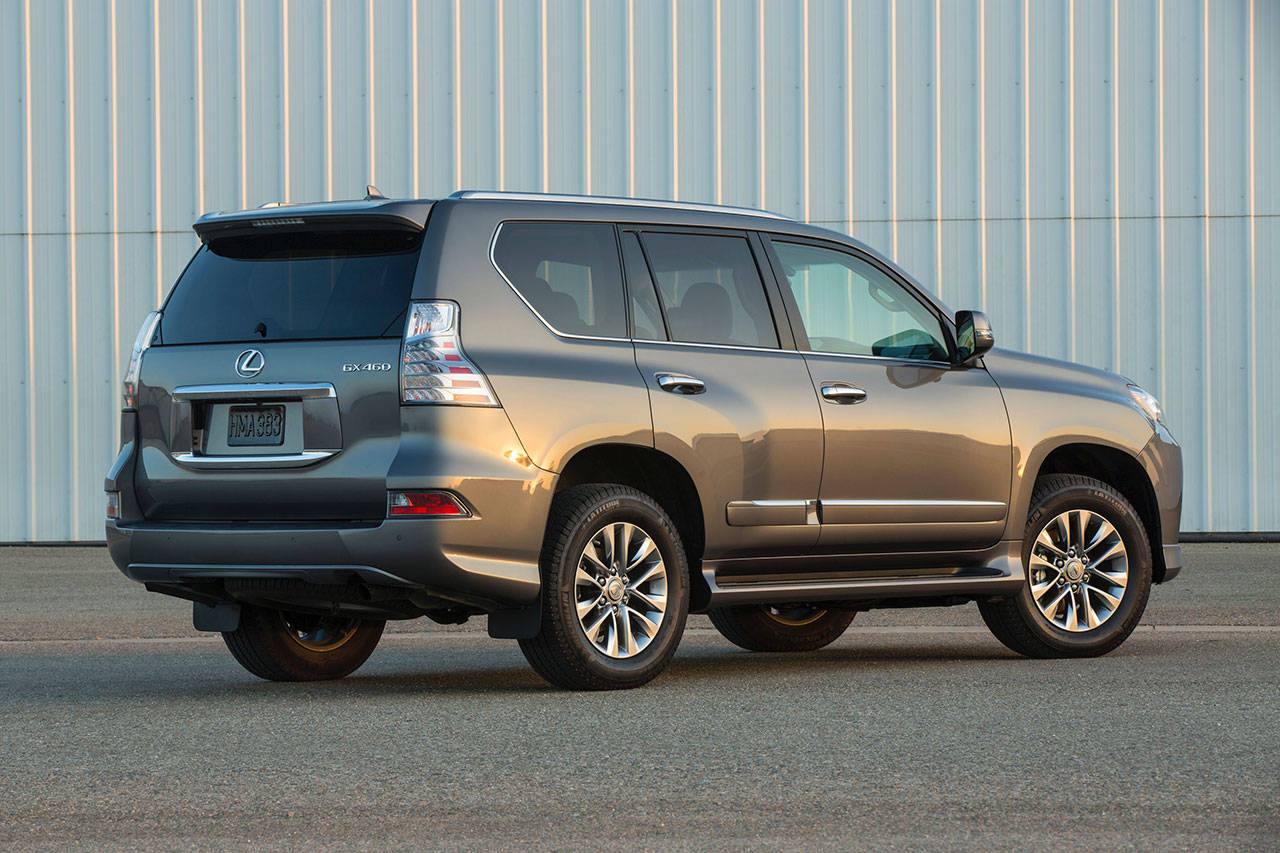
5. Lexus GX 460
At first glance, the Lexus GX 460 might look too posh for serious dirt-road work. With its polished wood trim, ventilated leather seats, and suite of modern tech, it feels like a luxury vehicle first and an off-roader second. But anyone familiar with its platform knows better.
Underneath all that refinement lies the Toyota Land Cruiser Prado chassis — a proven, body-on-frame design built for punishing environments. That means the GX has real off-road DNA, which translates into incredible composure on dirt roads. It doesn’t just survive rough terrain — it glides over it, maintaining an eerie sense of silence and stability while lesser SUVs shake themselves apart.
What truly makes the GX 460 stand out is the degree to which Lexus has over-engineered every detail. From the ultra-durable suspension bushings to the thick sound-deadening materials hidden in the doors and floors, the GX is designed to keep the outside world where it belongs — outside.
Even after tens of thousands of miles on rough terrain, the cabin doesn’t develop squeaks or interior panel noises. Everything remains firmly in place. The solid build quality is immediately noticeable when you shut a door or drive over gravel; there’s zero rattling, no dashboard wiggle, and the entire structure feels carved out of granite.
The beauty of the GX is in its dual nature. It’s a refined, quiet cruiser on the highway, but it becomes a steady, almost stoic partner on dirt roads. The full-time 4WD, Torsen center differential, and Crawl Control system give it serious off-road capability, yet you never hear it complain—not through noise, not through wear.
For those who want the comfort of a luxury SUV but need the durability of a true off-roader, the GX 460 offers an experience that feels unshakable, both figuratively and literally.
5 Cars That Fall Apart Instantly
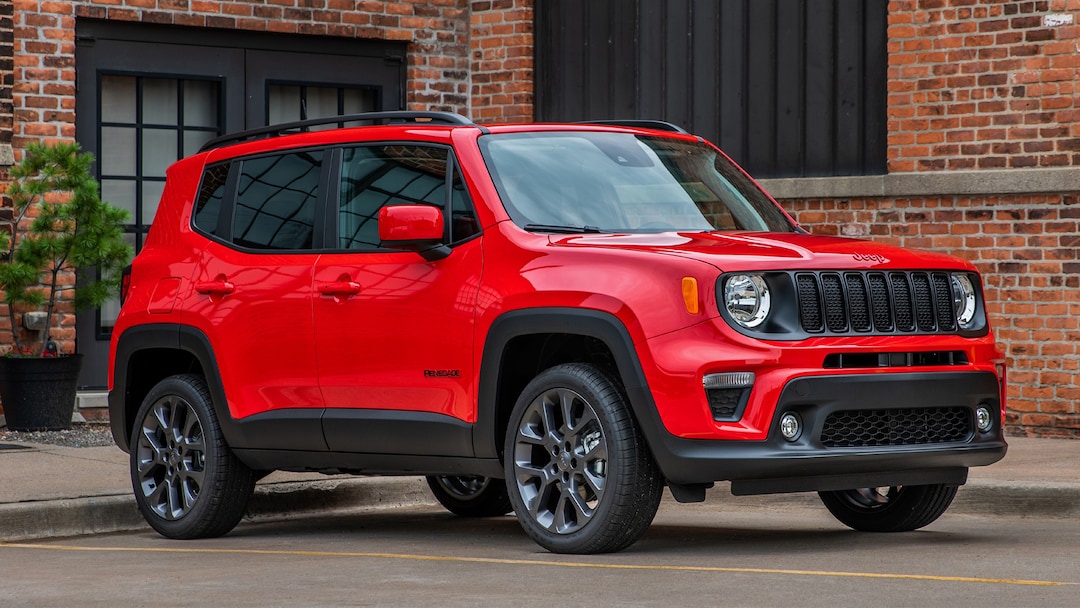
1. Jeep Renegade
The Jeep Renegade is a case study in marketing outpacing mechanical substance. At first glance, it’s a quirky, adventurous-looking crossover that borrows Jeep’s rugged aesthetic — squared-off fenders, vertical grille, roof rails, and trail-ready paint schemes.
But once the tires leave pavement, the Renegade’s limitations become glaringly obvious. Based on a platform co-developed with Fiat, the Renegade lacks the chassis strength, suspension tuning, and component quality necessary for handling even moderate off-road conditions.
Despite available AWD and Trailhawk badging on certain trims, the underlying engineering is better suited for urban potholes than washboard gravel roads or steep, dusty inclines.
What makes the Renegade so disappointing is how quickly it begins to rattle and creak under stress. Owners frequently report dashboard buzzing, door panel looseness, and plastic interior pieces vibrating themselves loose after only a few thousand miles on dirt or uneven surfaces.
The vehicle’s compact dimensions and relatively lightweight structure do it no favors either — it lacks mass and damping to absorb terrain irregularities gracefully, and the short wheelbase makes it feel jittery and unstable on bumpy backroads.
Even the seats can develop squeaking noises as their frames begin to flex under repeated bouncing and swaying. In short, the Renegade sounds like it’s falling apart even when it isn’t — and when it is, the sounds get louder.
Mechanically, the Renegade is far from bulletproof. Suspension components wear out quickly when regularly exposed to rough conditions, and issues with CVT performance and drivetrain inconsistencies are well-documented.
While Jeep attempted to build an accessible, entry-level crossover with off-road flair, the result is a vehicle that struggles to hold itself together when faced with the same environments its marketing implies it was born for.
For drivers looking for long-term reliability on unpaved or poorly maintained roads, the Renegade is best avoided. It’s a case of rugged looks masking fragile bones.

2. Chevrolet Trax
The Chevrolet Trax is a small crossover aimed at budget-conscious buyers, and while it may offer solid fuel economy and city-friendly dimensions, it’s completely out of its depth on dirt roads. The Trax is built on GM’s Global Gamma platform — a base designed more for affordability than strength or off-road versatility.
This economy-focused foundation becomes its biggest weakness when subjected to long stretches of unpaved terrain. From the moment your tires hit gravel, the vehicle starts to protest. The steering feels disconnected, the suspension clunks over washboard surfaces, and the structural integrity starts to come into question.
Inside, the cabin doesn’t hold up much better. The hard plastics that cover most surfaces are prone to rattling, especially in the dashboard and rear cargo area. Cupholders and storage trays buzz audibly when the vehicle hits minor imperfections.
Over time, dirt and dust make their way into every crevice, compounding the issue by contributing to abrasion, squeaks, and trim loosening. The rear hatch, in particular, is known to develop a noticeable creaking noise after repeated exposure to unsealed roads, and the weather seals on the doors begin to degrade far sooner than expected under dusty conditions.
From a mechanical standpoint, the Trax doesn’t inspire confidence either. Its suspension lacks articulation and travel, meaning even mild ruts can bottom it out or send harsh impacts into the chassis. This not only compromises ride quality but contributes to premature wear on bushings, struts, and wheel bearings.
The front-wheel-drive configuration, which makes up the majority of Trax sales, doesn’t help either — it struggles for traction on loose surfaces and transfers a lot of road texture into the steering column. In essence, the Trax was designed to navigate parking lots and grocery runs, not rural roads. Take it off pavement regularly, and you’ll be counting the days until your interior becomes a rolling rattletrap.
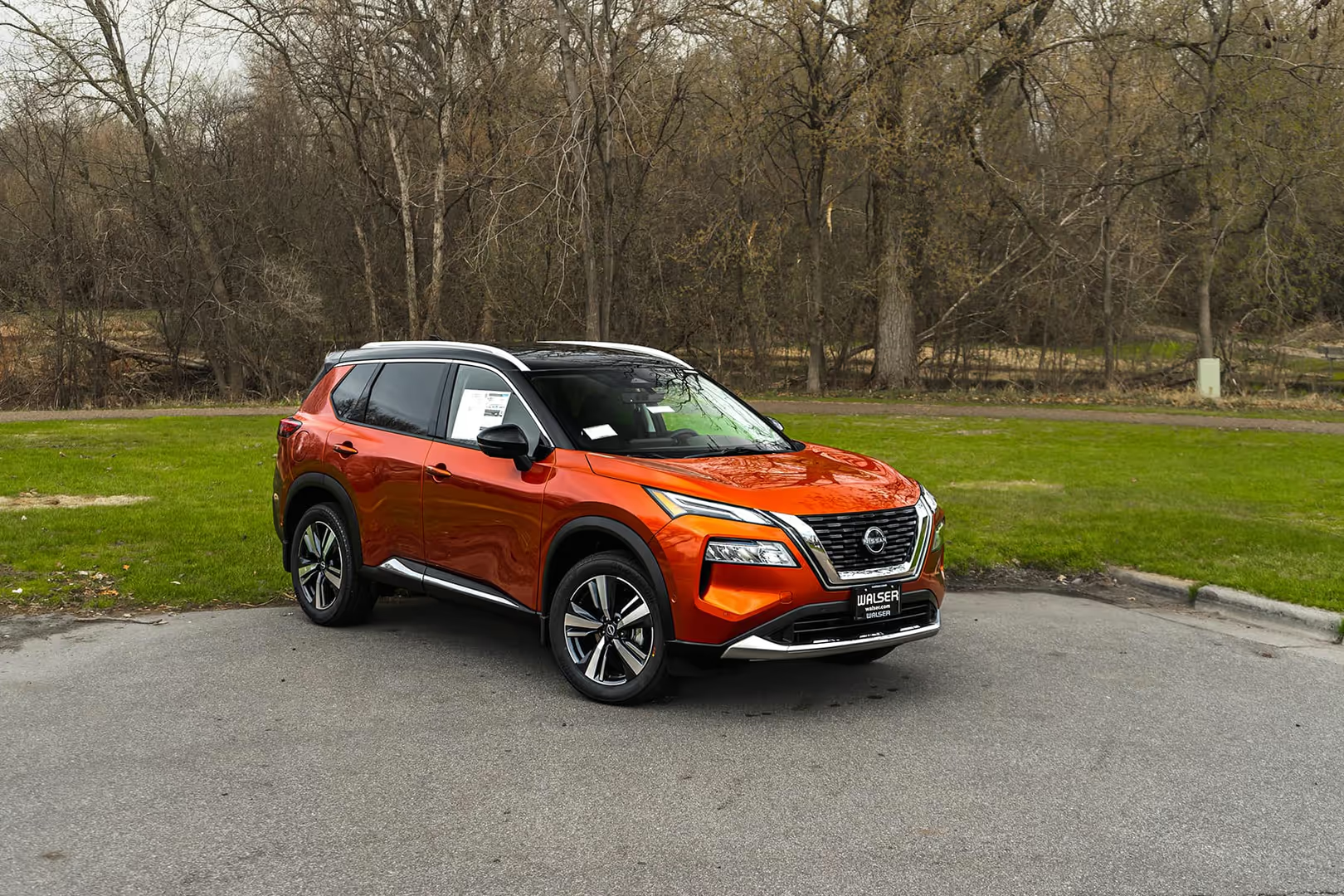
3. Nissan Rogue (Early 2010s Models)
The Nissan Rogue has evolved, but earlier models, particularly from the 2010–2015 era, suffered from chronic issues when faced with rough-road conditions. These Rogues were designed with cost savings as a priority, resulting in thinner metal, fewer sound-deadening materials, and a suspension system tuned more for highway comfort than rugged durability.
While they may have sold well due to their low price and respectable styling, these vehicles often showed their weaknesses almost immediately when subjected to uneven or unpaved surfaces. The body flexed noticeably, leading to door misalignment and long-term issues with squeaking and structural noise.
Inside the cabin, those same cost-cutting measures become painfully obvious. The interior plastics are thin and brittle, and the fit and finish are inconsistent. Frequent complaints include glove compartments that buzz, center consoles that creak under pressure, and seat frames that start to make audible clicks as early as 40,000 miles, often aggravated by bouncing down gravel roads.
The dashboard assembly, particularly around the infotainment and climate control zones, tends to shift ever so slightly over time, leading to persistent rattles that can be extremely difficult to isolate or fix.
From a suspension perspective, the Rogue simply wasn’t designed to endure repetitive jarring or side-to-side articulation. CV joints, strut mounts, and sway bar links are all known weak points, often failing prematurely in rough environments.
Combine that with lackluster underbody protection and poor ground clearance, and you’ve got a crossover that not only fails to perform off-pavement but actively begins deteriorating in those conditions.
While later Rogue models have corrected some of these deficiencies, anyone considering a used Rogue for rural driving should think twice, especially if they’re eyeing one from the early 2010s generation. It’s a crossover that feels like it’s fraying at the seams every time the pavement ends.
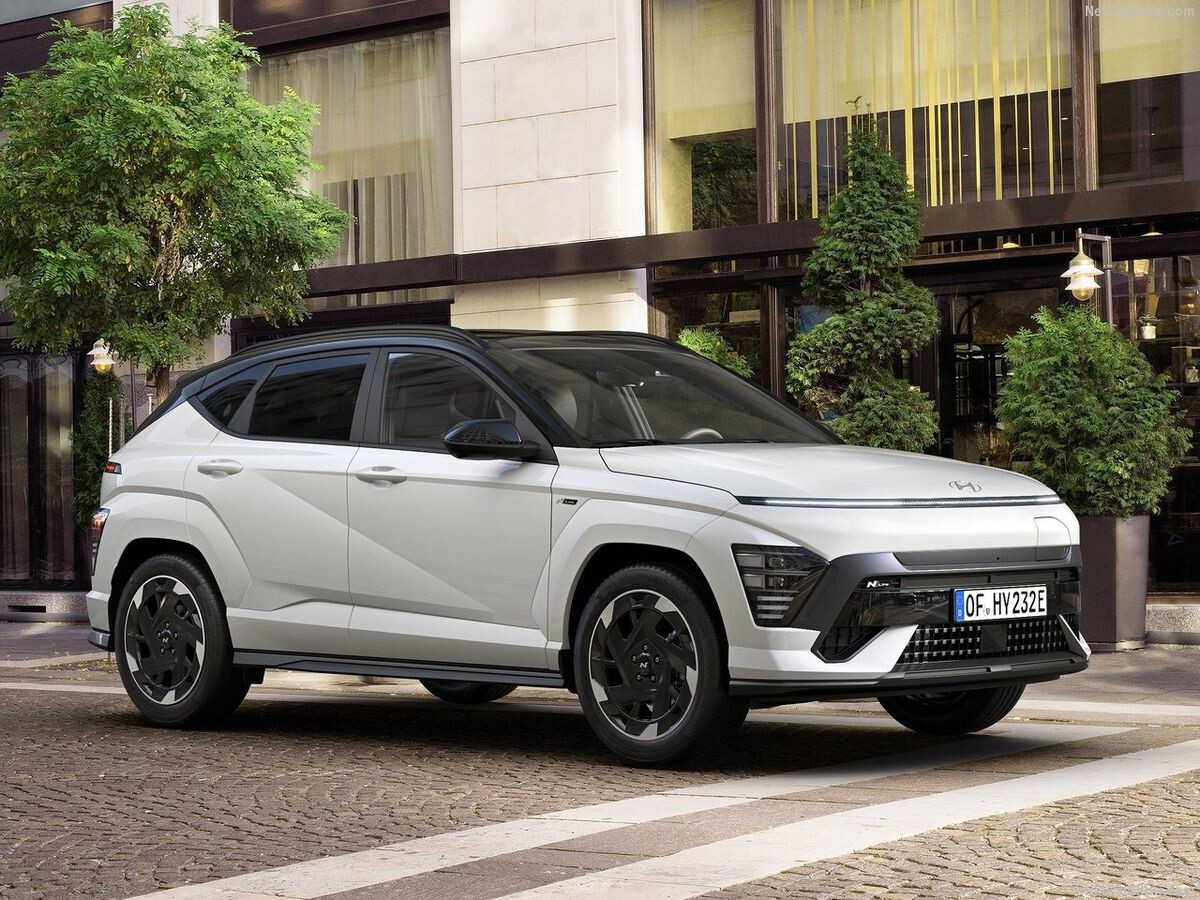
4. Hyundai Kona
The Hyundai Kona is another crossover that delivers a stylish design and good city manners, but its shortcomings become apparent the moment you leave a paved surface. With its sporty, compact proportions and low ride height, the Kona was not engineered for rugged environments.
The suspension is tuned more for handling agility than rough-road absorption, and this quickly turns into a liability when faced with corrugated gravel roads or uneven terrain. Instead of isolating impacts, the Kona transmits every bump and ripple directly to the cabin, resulting in a choppy, unpleasant ride.
Inside, the build quality feels solid at first, but that illusion fades fast under pressure. The cabin plastics — while tightly fitted at the factory — begin to shift and creak when subjected to prolonged vibration. The lightweight door panels resonate with road chatter, and the cargo floor can develop a hollow-sounding buzz if not securely anchored.
Owners have reported a growing list of rattles and buzzes developing over time, particularly when driving on dirt roads regularly. These issues often begin subtly — a slight tick in the steering column, a whispering hum in the dash — but soon evolve into a chorus of interior noise.
Beyond the annoyance of cabin rattles, the Kona’s mechanical resilience is mediocre at best when placed in off-pavement situations. Suspension components are light-duty and wear out quicker under rough conditions, particularly the rear shocks and bushings.
The AWD system, while competent for light snow and wet roads, isn’t designed to handle the demands of rural dirt trails or steep, loose climbs. It lacks both the clearance and torque distribution needed for real-world ruggedness. While the Kona is a decent choice for urban or suburban dwellers, it simply isn’t a car that tolerates off-road punishment well, physically or mechanically.
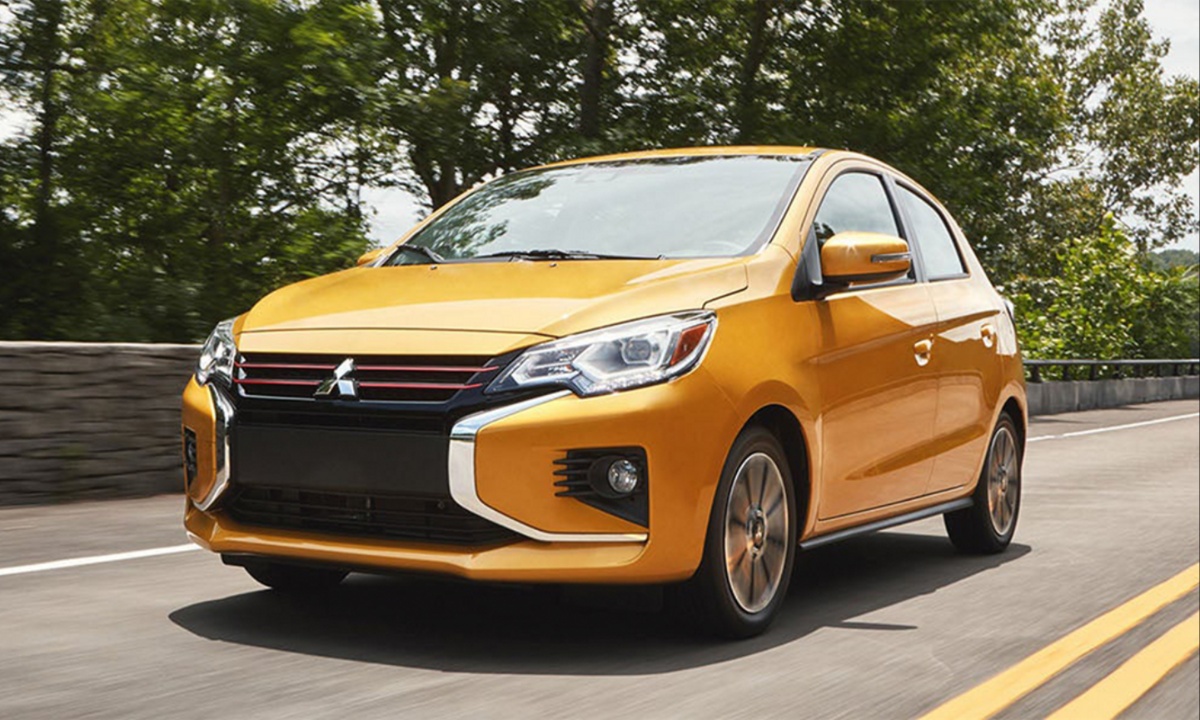
5. Mitsubishi Mirage
Few cars on the market feel as vulnerable on dirt roads as the Mitsubishi Mirage. A car built to meet ultra-low price targets, the Mirage sacrifices refinement, structural strength, and ride quality to offer one of the cheapest new vehicles available. Its three-cylinder engine, tin-can body panels, and minimalist suspension design all reflect a car intended strictly for city use.
Once you take it onto a dirt road, the Mirage’s glaring weaknesses become apparent within the first few miles. Everything inside and out feels unsubstantial, and the car does little to disguise the punishment it’s receiving from the ground below.
The interior of the Mirage is notoriously spartan, and while that’s expected at its price point, what’s not acceptable is how poorly it holds up over time. Door panels rattle after minimal use, the center console buzzes over minor imperfections, and seat tracks begin to creak under moderate weight.
The audio system hums with resonance from the poorly insulated doors, and the HVAC controls, which feel like they’re lifted from a toy, often shift in their mounts as the cabin vibrates. Even the steering column is known to develop looseness that translates into odd knocking noises over rough surfaces. The Mirage doesn’t age well, and it ages even faster when exposed to rural conditions.
From a driving perspective, the Mirage lacks the suspension travel and damping needed for any road that isn’t freshly paved. The shocks are soft, the springs are short, and the car bottoms out easily even on small ruts.
The tires — narrow and efficiency-focused — offer little grip, and with minimal sound insulation, every rock, bump, and dirt clump gets broadcast into the cabin like a drum. While it may be a viable option for commuters on a tight budget, the Mirage is one of the worst possible vehicles for anyone who regularly travels on dirt roads. It doesn’t just rattle — it practically disintegrates.
Also Read: 5 Cars With Fake Reliability Ratings and 5 That Deserve the Hype
At the end of the day, dirt roads do more than challenge your driving skills — they test the soul of a vehicle. Unlike city potholes or high-speed cornering, which can be brief and occasional, rural or unpaved roads represent sustained adversity.
They’re persistent, unrelenting, and completely unbothered by the badge on your hood. And over time, they expose the difference between what’s engineered to endure and what’s designed to impress on a showroom floor.
The vehicles that survive — and even thrive — under these conditions share some core traits. First, structural rigidity. Cars like the Toyota 4Runner or Lexus GX aren’t just heavy — they’re stiff in all the right ways. Their chassis doesn’t flex. Their doors don’t wiggle in their frames.
Their dashboards remain rock solid, no matter how long the road stretches. Second, intelligent suspension design. Vehicles like the Ford F-150 and Subaru Outback feature shock tuning that absorbs rather than amplifies terrain irregularities, protecting both mechanical components and cabin harmony.
Third, thoughtful interiors. These vehicles use materials that don’t vibrate loose or resonate under load, and they install them with precision. Over thousands of miles, that care shows.
On the flip side, the cars that fall apart often don’t do so all at once. It’s a slow degradation — a buzz in the dash, a door that begins to creak, a rear hatch that won’t stay quiet no matter how many times you slam it shut. Vehicles like the Mitsubishi Mirage or Jeep Renegade often start strong in urban reviews because they ride well on fresh pavement and look good in pictures.
But once they hit gravel, the cut corners become obvious. Flimsy door seals, cheap fasteners, weak suspension mounts, and poor sound insulation combine to turn a peaceful drive into an exhausting one. And worse still, the damage isn’t always cosmetic. Mechanical components suffer from prematurely worn bushings to chassis fatigue that affects alignment and ride quality.
It’s worth noting that price isn’t always the deciding factor. Some of the best performers — like the Outback or Grand Cherokee — aren’t the most expensive in their class. Meanwhile, some of the worst performers aren’t the cheapest either. What matters is design philosophy.
Was the car built to be used in the real world, or was it engineered to meet cost goals and marketing hype? Does it rely on heritage and substance, or is it trying to fake toughness with plastic cladding and a few badged trim levels?
For those who live on dirt roads, travel into nature, or simply prefer a vehicle that stays silent and solid over the long haul, these differences aren’t academic — they’re daily reality.
Because when you hear a new rattle every week, or feel your suspension degrade before your first set of tires is worn, you’re not just experiencing inconvenience. You’re experiencing the failure of a promise.
